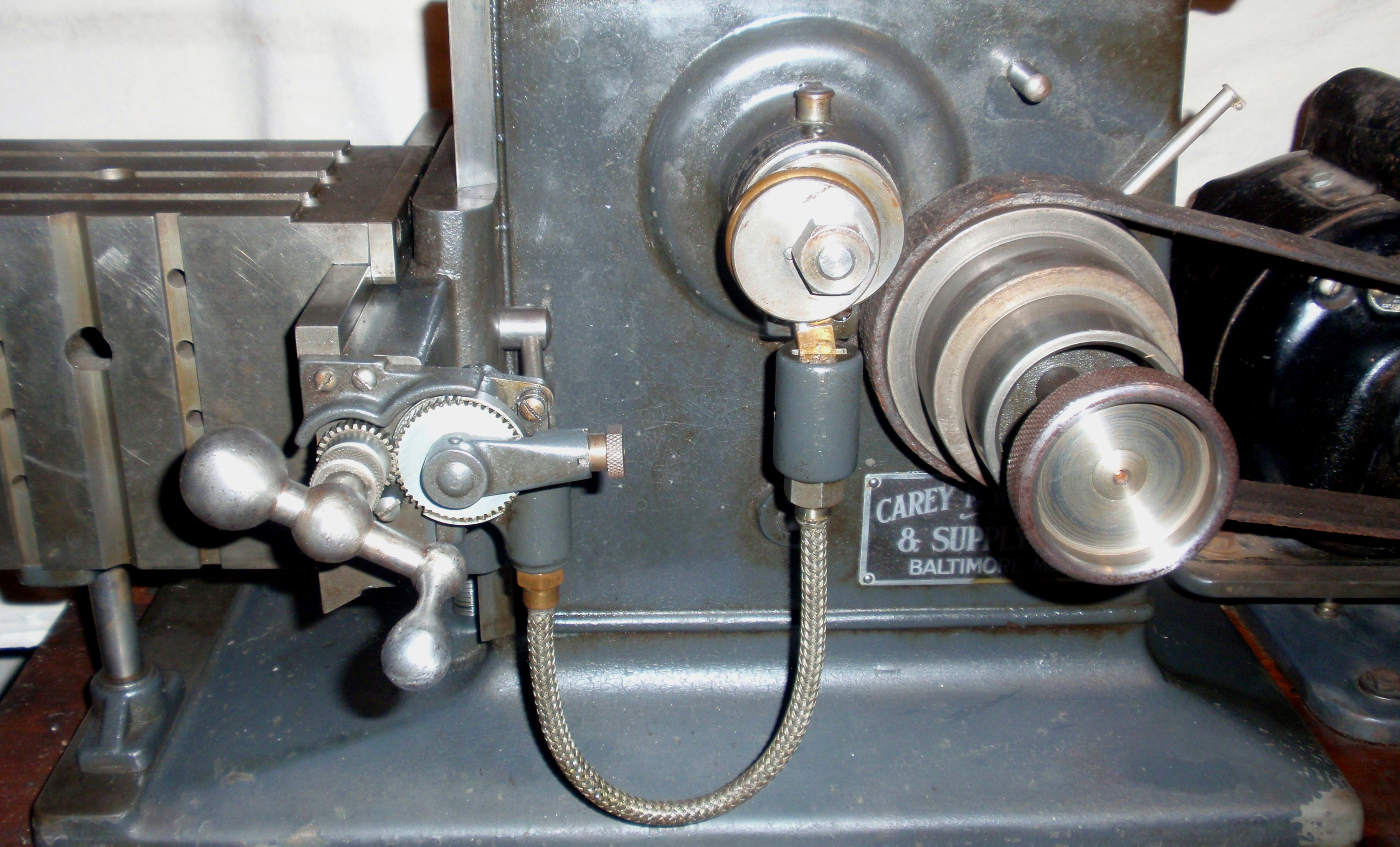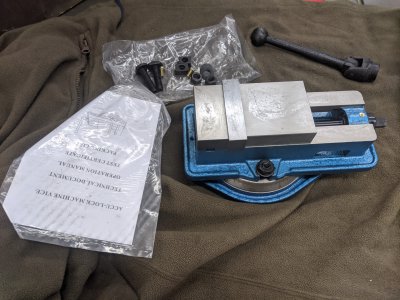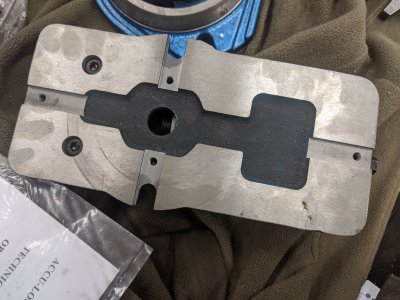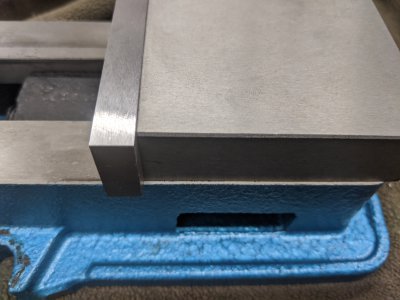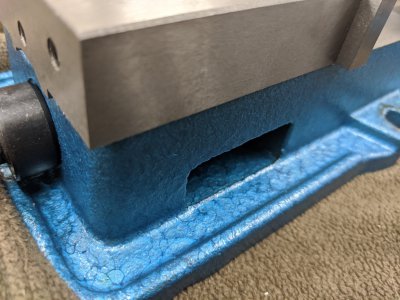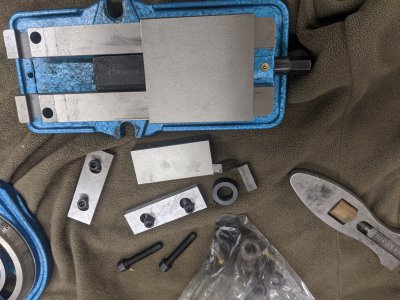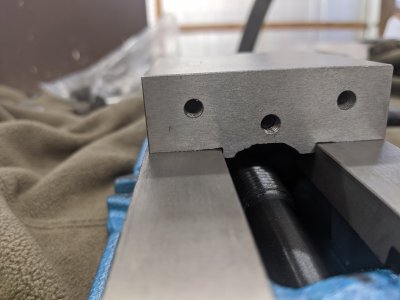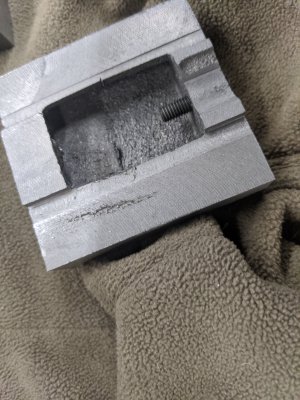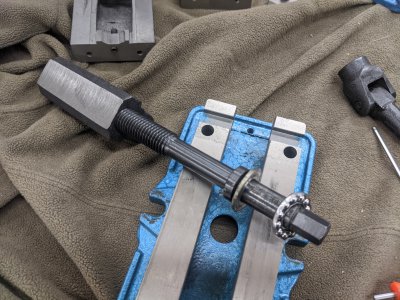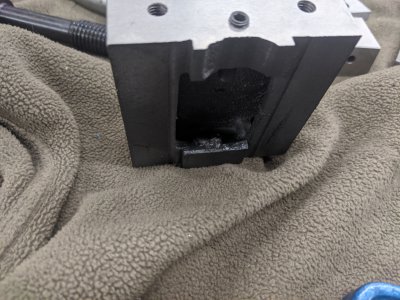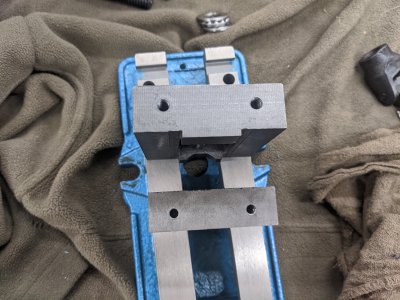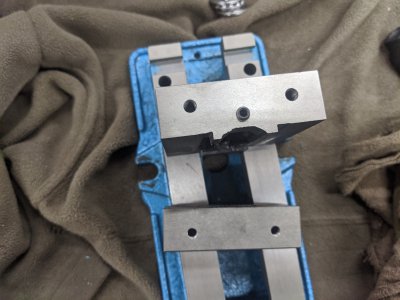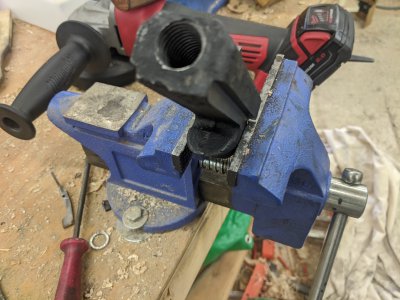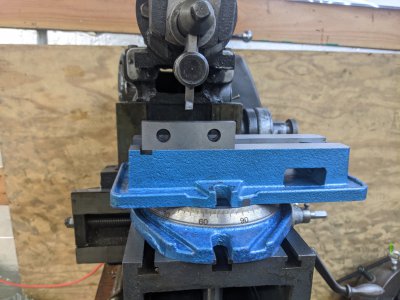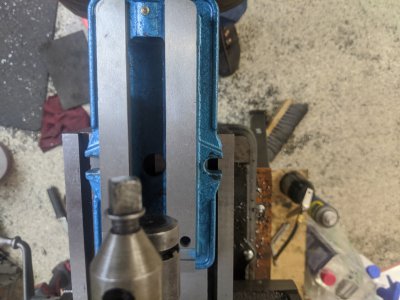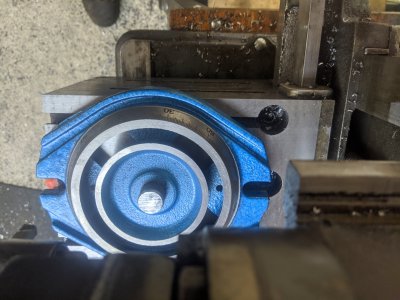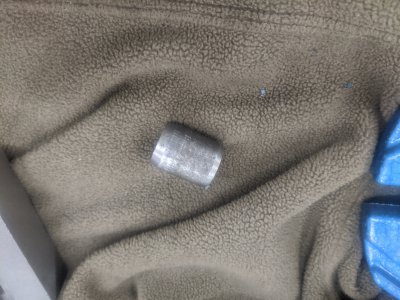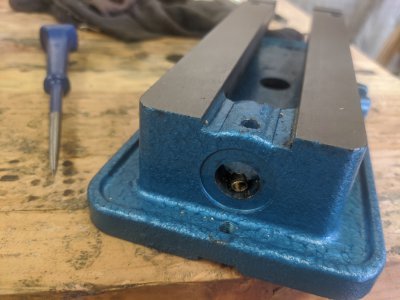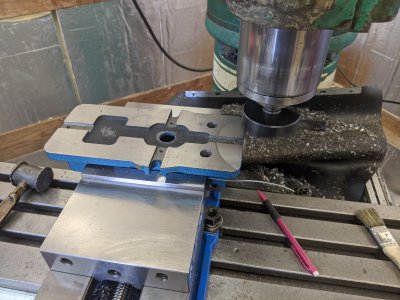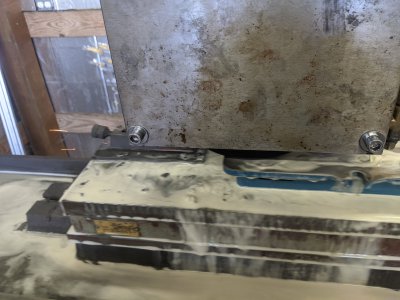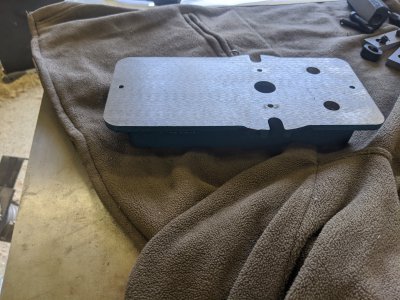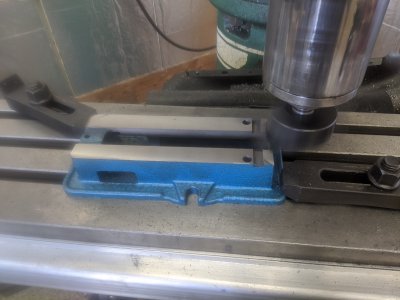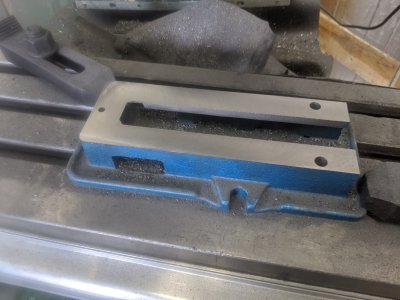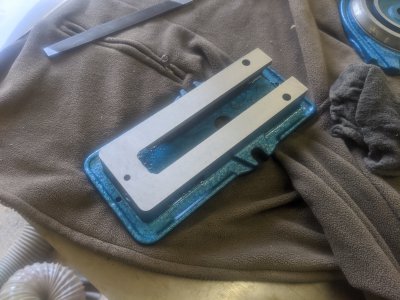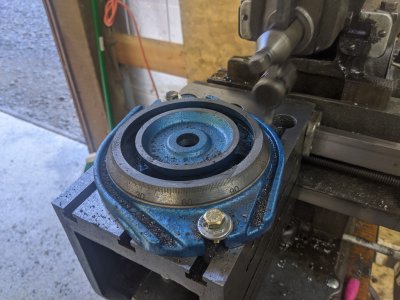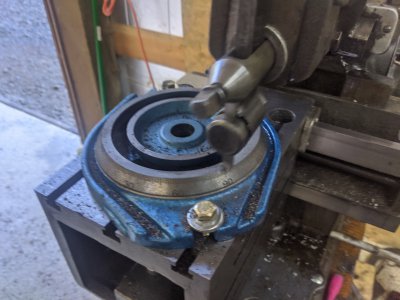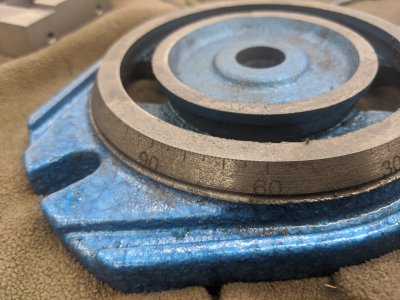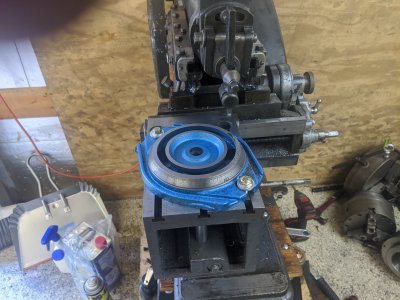- Joined
- Aug 3, 2017
- Messages
- 2,437
Huh... I never thought about just modifying the vise to mount using only a single bolt to rotate that way. Thats an interesting idea! There is going to be a negative for the mounting post in the bottom (since that is how the swivel bases work). On my mill, I do away with the keyway, the swivel base graduations are accurate enough to be within a thou across the jaws (which I fix when more accuracy is necessary). Part of the reason I liked the swivel base.As Hawkeye mentioned, ditch the swivel base. You never actually need the vise to swivel, you just need the ability to mount it at all different angles.
Which brings us to a different problem: mounting. The vise that came with my Ammco has two critical features: a central mounting post (goes through the table to a nut/washer combo on the underside of the table top), and a way so that it can easily be aligned to a 'normal' (jaws perpendicular to the ram travel) orientation via the central slot.
The keyway is easy; the mounting post, not so much. You might consider making your own graduated base which incorporates one. This is not as bad as it sounds: the base itself does not need to swivel, as the central post acts as the pivot. Of course this assumes the Atlas as the same style of vise mount - if it doesn't, then you'll need to come up with a mounting plate that can be indexed to common angles (you really don't need all 360 of them, right?) using the table mounting holes.
I don't know what class of work you are doing, but don't fret overmuch about the clearance. The stroke of the ram and the X-axis travel are much more limiting factors. You want the tool to be mounted as close to the end of the clapper as you can (unless you are doing dovetail or T-slot style work, in which case the point is moot), so tool stickout isn't an issue like with a mill. Remember also that you can replace the lantern on the clapper (or even the entire clapper) in order to support front- (not down-) facing tools. Workpieces that eat up the space between the vise and tool are probably too large to be held in the vise anyways. Don't neglect the sides of the table for mounting.
I've been doing a lot of work on my Ammco this week to get DROs mounted. Dunno if I'll start a thread on that, as I'm not really the photojournalist sort so my projects are not documented. I think there's already a shaper DRO thread.
One last thought for newly-christened shaperheads: track down the Ian Bradley books The Shaping Machine and Lathe And Shaper Tools. Slim volumes, aimed at the hobbyist size of shaper, lots of good ideas. You can usually find the books cheaper when they are written under his pen name, Duplex.
The atlas just has 3 T-slots, so I was originally going to use the 'wing' mounts, and perhaps keep the swivel base for swiveling (as well as just find a 'shorter' way to mount it).
That first Ian Bradley book is spendy! $100 is the cheapest I could find it! The second, even under the 'duplex' name still seems to be $65.


